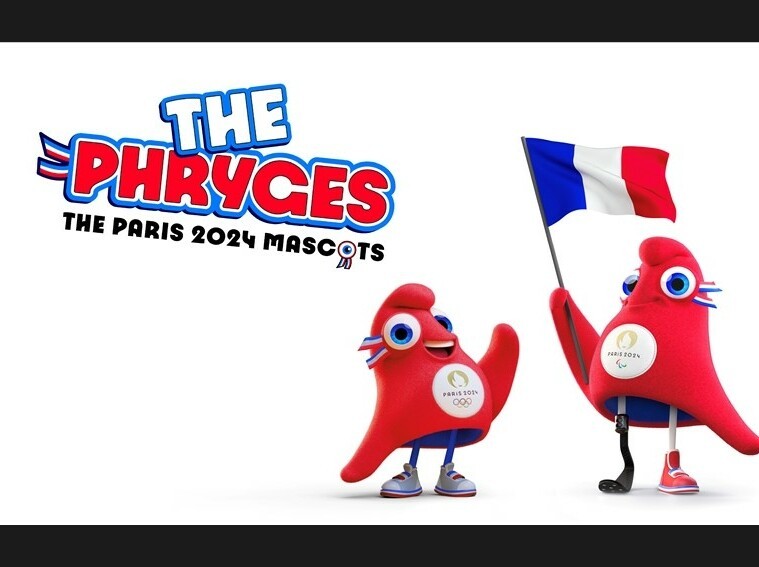Did you know that the Phrygians, a mighty Iron Age kingdom of Anatolia, inspired the mascots of the Paris 2024 Olympic and Paralympic Games? As stated by the International Olympic Committee, the Olympic Phryge and the Paralympic Phryge mascots are designed as floppy hats based on the traditional caps once worn by the Phrygians and adorned in blue, white, and red, the colours of the French flag. Reflecting the cultural heritage of the ancient Anatolian kingdom, Phrygia, the mascots also celebrate the notion of liberty with their cap shape, which you can also remember as a wardrobe staple of the Smurfs.
It’s believed that Phrygians migrated from the Balkans to a broad region in west-central Anatolian lands, covering the present-day Turkish provinces of Ankara, Afyonkarahisar, Eskişehir, and Kütahya. Rising with the collapse of the Hittite Empire in the 12th century BCE, these ancient people built their capital at the site of Gordion, designated as Türkiye’s 20th UNESCO World Heritage Site in 2023. Best known as Phrygia’s political and cultural capital, Gordion is directly associated with the episode of the Gordian Knot, recounted by many ancient historians. Legend has it that the knot was believed to be untied only by the future conqueror of Asia. Also, the city was once under the reign of King Midas, cursed with the “donkey ears” and “golden touch” in mythology.
The Phrygian cap, which inspired the Olympic mascot, first appeared in a carved depiction of a cavalryman at Gordion. Also, King Midas was often portrayed wearing a Phrygian cap, while, according to a legend, he even wore it to cover his donkey ears.
Symbol of Liberty
The Phrygian cap, or ‘liberty cap’, whose origin goes back thousands of years, made many appearances in later periods, such as the Roman life and even the French Revolution, and acquired a more profound significance. In ancient Rome, enslaved people wore the pileus, a similar hat to the Phrygian cap, upon being freed. Over time, the pileus and the Phrygian cap are assumed to be the same, becoming an influential icon symbolising liberty. The 18th-century French revolutionaries also wore these caps as a symbol of freedom. During the course and after the French Revolution, the Phrygian cap appeared in paintings and statues. The fact that the cap has remained a famous symbol for the French throughout history made it the obvious choice for this year’s Olympic Games mascot.
In Footsteps of Phrygians, the Muse Behind Olympic Phryge
The historic homeland of Phrygians in Anatolia is named “The Phrygian Valley” today. The valley is a vast landscape unlike any other worldwide, with stellar examples of Phrygian rock monuments. The area is of universal importance because it preserves traces of the Phrygians’ religious rituals and social life. Accordingly, the Mountainous Phrygia Region, which includes Kütahya, Afyonkarahisar, Ankara and Eskişehir, has been on the UNESCO World Heritage Tentative List since 2015. It is possible to explore this unique landscape through hiking and cycling routes.
With the Phrygian Way, Türkiye’s 3rd longest hiking trail, stretching more than 500 kilometres, you can follow the footsteps of the Phrygians. Three alternative areas to start the Phrygian Way are Gordion in Ankara, Seydiler in Afyonkarahisar and Yenice Farm in Kütahya. On the trails that begin at these points and continue through the Phrygian Valleys, you should see Gordion’s spellbinding structures of the Phrygian period, like the tomb of King Midas, which is the third largest burial mound, and the tomb chamber within it, the oldest standing wooden building in the world. In Ankara, you should also visit the Museum of Anatolian Civilisations, where artefacts from all over Anatolia, especially from significant sites like Gordion, Hattusha and Çatalhöyük are displayed. One cannot fully appreciate Gordion and other Phrygian sites without visiting the museum and learning about this culture.
Other highlights of the Phrygian Way are Ayazini Village, famous for its rock houses, tombs, and church, the rock-carved Avdalas Castle and Emre Lake in Afyonkarahisar and Kütahya’s Aizonai Ancient City. The Phrygian route converges at Yazılıkaya, a significant Phrygian settlement in Eskişehir. In addition to Yazılıkaya, the area’s outstanding sites include magnificent Phrygian rock facades in Eskişehir, the Lion Temple, featuring extraordinary lion reliefs, and Gerdekkaya, the monumental rock-carved tomb.
www.goturkiye.com

